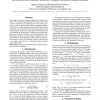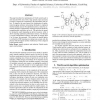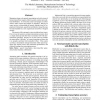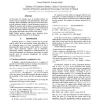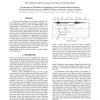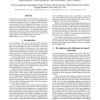INTERSPEECH
2010
13 years 7 months ago
2010
This paper presents a new approach to language model construction, learning a language model not from text, but directly from continuous speech. A phoneme lattice is created using...
INTERSPEECH
2010
13 years 7 months ago
2010
In this paper, we present a systems approach for channel modeling of an Automatic Speech Recognition (ASR) system. This can have implications in improving speech recognition compo...
INTERSPEECH
2010
13 years 7 months ago
2010
The paper describes the optimisation of Viterbi search used in unit selection TTS, since with a large speech corpus necessary to achieve a high level of naturalness, the performan...
INTERSPEECH
2010
13 years 7 months ago
2010
Managing a large-scale speech transcription task with a team of human transcribers requires effective quality control and workload distribution. As it becomes easier and cheaper t...
INTERSPEECH
2010
13 years 7 months ago
2010
In this paper we examine cases of non-final nucleus (or sentence stress) in English, Czech and Hungarian. These three languages differ substantially with respect to word order rul...
INTERSPEECH
2010
13 years 7 months ago
2010
Virtual articulatory targets are a concept to explain the different trajectories of primary and secondary articulators during consonant production, as well as the different places...
INTERSPEECH
2010
13 years 7 months ago
2010
Stochastic dependency parsers can achieve very good results when they are trained on large corpora that have been manually annotated. Active learning is a procedure that aims at r...
INTERSPEECH
2010
13 years 7 months ago
2010
In light of the serious problems with both illiteracy and information access in the developing world, there is a widespread belief that speech technology can play a significant ro...
INTERSPEECH
2010
13 years 7 months ago
2010
We describe a new method for pruning in dynamic models based on running an adaptive filtering algorithm online during decoding to predict aspects of the scores in the near future....
INTERSPEECH
2010
13 years 7 months ago
2010
We propose a delexicalization algorithm that renders the lexical content of an utterance unintelligible, while preserving important acoustic prosodic cues, as well as naturalness ...

